Google I/O 2016 as it happened – just the highlights
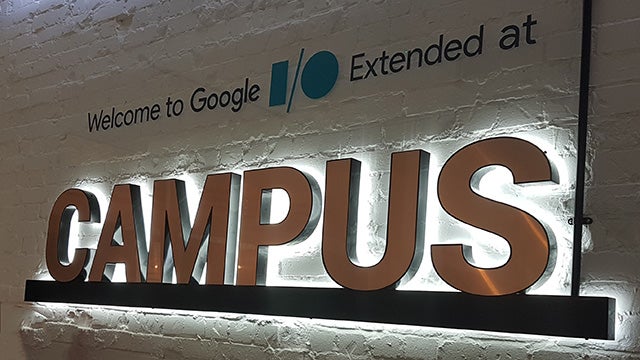
A roundup of all the Google I/O 2016 news and updates you need to know.
We’re almost at the end of Google’s annual developer conference, Google I/O 2016. But there’s still a full day of presentations and events to go.
Google CEO Sundar Pichai took to the stage of the Shoreline Amphitheatre in Mountain View, California, to open proceedings on Wednesday, and we’ve had a few big announcements, if nothing hugely surprising
As this is the biggest I/O event since 2013, taking place over three days, we were expecting a lot from the conference. And although nothing has blown us away, there’s been a lot of interesting developments worth knowing about.
Here are the highlights.
Related: Why Google Home and Assistant will kick Amazon and Apple to the curb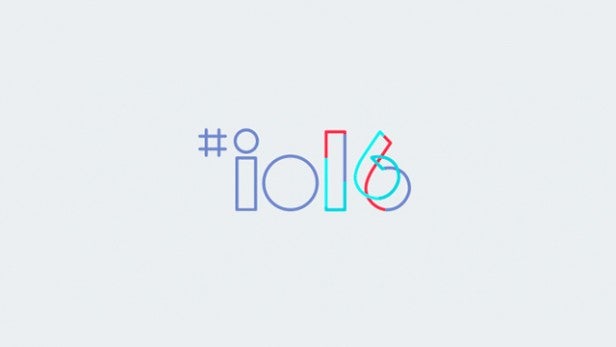
Google Assistant: The beginning of an AI?
During the keynote speech, Pichai unveiled a new “conversational” assistant. Based upon natural-language processing, Google Assistant seems to be a new name for Google Now, which has been available for some time on Android devices.
But the focus was very much on being able to speak naturally to the software, with Pichai providing the example of standing in front of the Cloud Gate sculpture in Chicago and asking Google “who built this?”. The assistant will then use your location to determine what you’re referring, providing you with the relevant information.
Other examples included asking the assistant whether a movie is “any good”, prompting it to return reviews for the film.
Related: Trusted Verdict – Our most important Google I/O 2016 moments
Video: The best bits from Google I/O
Google Home: An Amazon Echo with Google smarts
This is where things get interesting. Google assistant seemed like a fairly modest upgrade to Google Now On Tap, but all became clear as soon as Pichai moved on to this next section.
Reports in the lead up to I/O 2016 suggested that Google was gearing up to take on Amazon with an Amazon Echo rival. Now we’ve officially been introduced to Google Home – a new voice-activated smart speaker
This Wi-Fi speaker uses the newly branded Google Assistant and comes with a range of impressive features designed to make life at home much easier.
Firstly, the device will stream music directly from the cloud, and works with a range of music services. You can also send music from your phone or tablet using Google Cast.
Next, there’s the ability to control video content. Ask Google Home to play video and the clip will appear on a screen you’ve previously identified as the go-to display.
Related: What is Amazon Echo?
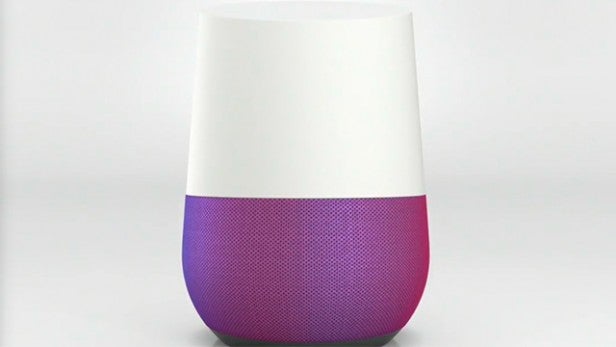
Google Home will also connect with your smart home devices, such as lights, thermostats, and switches, including Nest devices. In the future, you’ll also be able to use Google Home with third-party services to book an Uber or order flowers, for example. And all by simply talking to it.
Other features include the ability to search using Google’s powerful search abilities. Ask the smart speaker direct questions and it will provide immediate answers using Google search, all using natural language. Pretty impressive.
Related: Google Home revealed – Everything you need to know
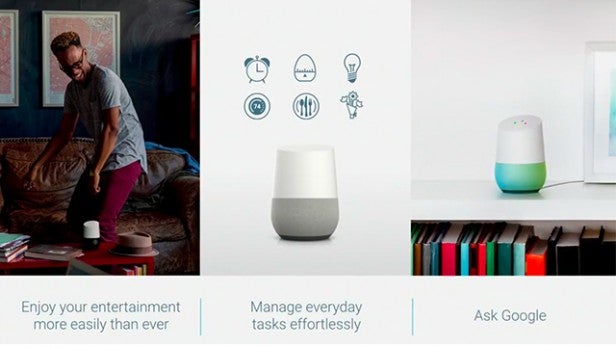
Google didn’t provide details of a release date beyond “later this year”, but more will be shared with developers very soon, according to the company. If we were Amazon, we’d be worried.
Allo: A very smart but creepy messaging app
Engineering director, Erik Kay, took to the stage during the keynote presentation to introduce a new “smart messaging app” called Allo. Speaking about the app, which comes with Google built-in, he said: “It works over time to make conversations easier and more productive”.
Standard features include stickers amd emojis, but Google has tried to push things a bit further in several areas. Firstly, something called Whisper Shout will allow you to change the size of your text by using a slide bar. “No more yelling in all-caps to get your point across”, as Kay said on the day.
Also present is a built-in “smart reply” feature, which will suggest responses to the last message received, saving you typing time. The more you use Allo, the more it learns how you respond and tailors the suggestions. It will even propose responses to photos. If you receive a picture of a dog, for instance, Allo will suggest replies such as “cute dog”.
Related: 10 things Google should have announced at I/O 2016 – but didn’t
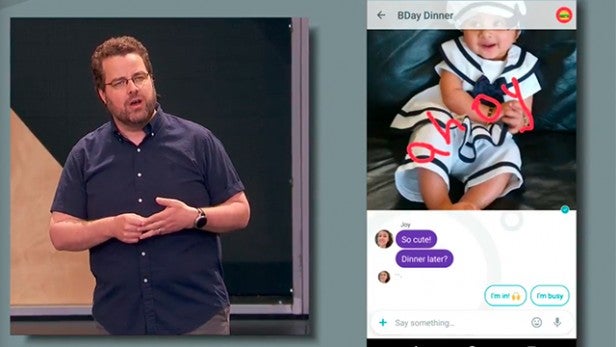
Kay also demonstrated the app’s ability to interpret the data in a photo and offer more complicated replies based on that information. If you get sent a picture of food for example, Kay claimed that the app will be able to tell what kind of food it is and offer a quick response which includes that information. It’s all a bit scary really.
In addition, Google has built its new assistant into Allo. This means you’ll get extra functionality, such as restaurant suggestions based on the conversation you’re having, and the ability to reserve a table, all within the app. You can also carry out Google searches within Allo.
Another big feature is the ability to talk directly to Google. Chatbots are increasing in popularity, and Google wants to get in on the action. With the Google chatbot built into Allo, you’ll now be able to interact with all the Google services by using natural language in a conversation thread. You’ll even be able to play games with Google within the chat. For instance, the bot will provide you with a string of emojis and ask you to guess the movie title.
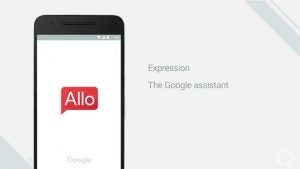
Allo will be available this summer on iOS and Android.
The ability to use Google within chats and interact with Google using natural language has huge potential and might just have other messaging apps such as WhatsApp worried.
Duo: A cool alternative to Skype
The video companion to Allo, Duo is designed to work even on slow connections. The app will consistently monitor your data connection to upgrade and degrade video quality on the fly. It’s this that Google says makes it an incredibly reliable video-calling app.
The other big feature is something called Knock Knock. This will give you a video preview of the person calling before you’ve even picked up, so you can see what’s going on before committing to the call. Unless you’re consistently the target of some awful video-calling prank, we’re unsure as to why this is necessary. But it’s a novel feature which might just turn out to be useful.
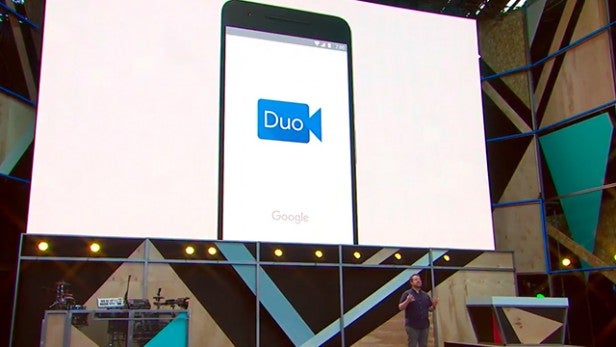
Like Allo, Duo will be available this summer on iOS and Android. A specific date is yet to be confirmed.
Android N: The latest news
There was never any doubt that the next iteration of Android, currently known only as Android N, would feature heavily at Google I/O 2016. And now we have even more info on the forthcoming OS. Still waiting on that name though…
Related: How to install Android N right now
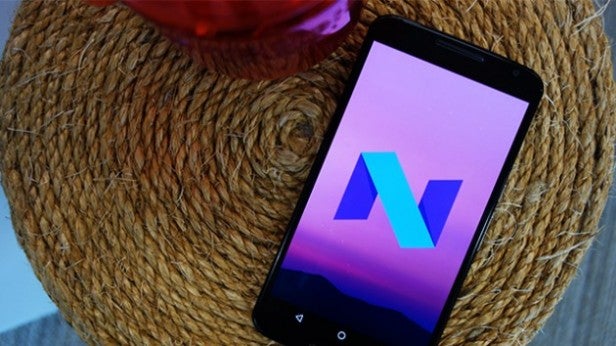
Whereas previous I/O events have been used to debut the latest Android updates, this year, the developer preview edition of Android N was released more than two months ahead of the conference. Ostensibly, this was to give developers more time to create apps and programs for the OS, but we thought Google might have a few tricks up it sleeve when it came time to discuss Android N at I/O.
And the Keynote speech revealed some pretty interesting facts in that respect, if nothing hugely revelatory. First, we’ve been invited by Google to help name the upcoming OS. That’s right, Google wants you to vote on what the N should stand for. You can go to the Android N site if you fancy joining in.
Related: Nutella and 8 more sweet names for Google’s next OS
https://twitter.com/statuses/732993960478707714
Prior to Google I/O, we knew the new OS would include new-look folders for apps, updated emojis, and support for the new gaming API Vulkan. Google spent a lot of time during the keynote presentation elaborating on the benefits of Vulkan and demonstrating the improved graphics that come with the new API.
There was also plenty of information on security improvements, including file-based encryption and seamless updates. That means your phone will automatically download the latest software update without you having to do anything. Nothing huge, but pretty nifty.
Other changes revealed prior to the event included a refreshed notification bar that lets you access quick settings with only one swipe, and multi-window support. Google spent some time focusing on this last feature during the keynote presentation. Quick Switch, for example, will allow you to go back to the most recent app by double-tapping the “recents” button on the navigation menu. Split-screen and picture-in-picture were also reiterated, demonstrating Android N’s improved multi-tasking abilities.
Google expects to launch Android N late in summer, with a new opt-in beta program open as of now. The new beta is stable enough to run on any device, and you can find out how to get involved by referring to our ‘How to install Android N right now‘ piece.
Daydream: A new VR platform for smartphones
In the run-up to this year’s event, many were certain we’d see the arrival of a new VR headset and platform from Google. There was even talk of two new virtual reality devices – a standalone headset that didn’t require tethering to a phone or tablet, and a lower-end headset.
Alas, Google’s VR ambitions turned out to be far less exciting than we’d hoped. We were introduced to a new VR platform, but the rumoured headsets never materialised – at least, not in the way that we’d hoped.
Head of Google’s VR division, Clay Bavor introduced the company’s new VR platform Daydream. It’s all a bit vague at this point, but the platform breaks down into three key areas: smartphones, headset and controller, and apps.
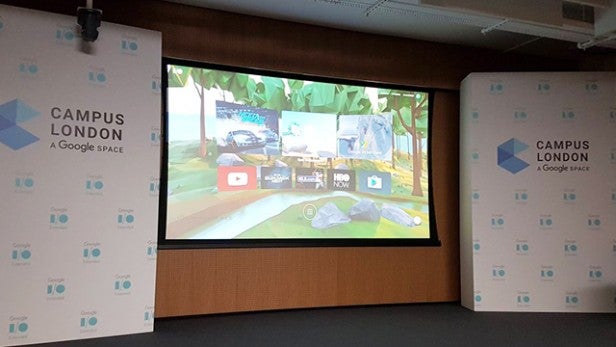
Firstly, Google has developed a set of specs, which manufacturers should adhere to if they want to make a ‘Daydream-ready’ device. Daydream-ready phones will be arriving from Samsung, Alcatel, HTC, LG, Xiaomi, and more later in the year.
Secondly, rather than launching its own VR headset, Google has developed reference designs for a new headset and controller, which it will be distributing to developers and manufacturers. Details were sparse but the unnamed controller looks similar to a Roku remote, and has motion sensors built-in. That means you can swing it around like you would a Nintendo Wiimote – there isn’t really anything else like it for Android phones.
Bavor has since confirmed that Google will also be building Daydream VR headsets in-house.
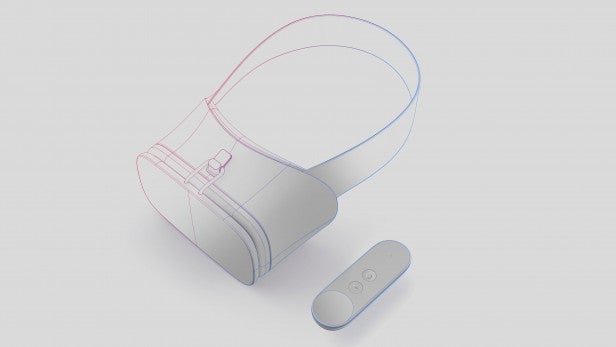
Lastly, VR content. Play Movies, Street View (an obvious choice), Google Photos, and a rebuilt YouTube will debut on the Daydream platform, while apps from Netflix, Hulu, IMAX, HBO NOW and New York Times are also incoming.
Daydream is built on Android N, and as such, the OS will feature a VR mode, which will include several optimisations to improve app performance, including reducing the all-important latency to less than 20 milliseconds. VR Mode is also the new ecosystem where users will access content and navigate the virtual world. It’s a vast improvement on Google Cardboard and early demos shown at I/O look promising.
Daydream will arrive later this year, but devs will have the opportunity to begin developing for the platform from now.
Outside of Daydream, Clay Bavor also confirmed that Google is working with IMAX to create a 360-degree camera capable of creating high-quality cinema-grade video. The Jump camera rig, which was debuted at last year’s conference and uses 16 GoPro Hero 4 cameras, has attracted the attention of Hollywood. An upgraded, cinema-quality version of the rig is now in the works, as Google looks to build on its Jump VR system.
Android Wear 2.0: Some small updates
Since it was first debuted, Google’s wearable OS Android Wear has struggled to establish itself. Although 2015 saw several upgrades introduced, many have criticised Google’s commitment to updating the platform, and as such, the company took time during the keynote speech at I/O 2016 to announce Android Wear 2.0.

The biggest revelation was that you won’t now need a phone in order to use some apps on your smartwatch. Apps will connect directly to the internet and function as standalone software. That’s a huge improvement, one that will go a long way to bringing smartwatches closer to the mainstream.
There’s also a vastly improved fitness platform that tracks your workouts automatically, the ability to launch Spotify directly from the watch-face, and a teeny-tiny new keyboard for replying to messages.
Google obviously wants to get people excited about its wearable platform again, and with these new upgrades, it’s done plenty to move things in the right direction.
Devs can try the new Android Wear now; it will be fully launched later this year.
Announcements you might have missed
Project Tango
VR isn’t the only new visual technology that Google is concerned with. The company also has plans when it comes to augmented reality, where virtual objects are overlaid onto the physical world (Microsoft’s upcoming HoloLens headset is perhaps the best-known example of AR tech).
Google’s Project Tango is focused on allowing smartphones to ‘see the way we see’. That means adding the ability to understand the environment and your relation to it with a little help from Intel’s RealSense 3D camera. This will allow handheld devices to be used in a variety of new ways, i.e. for measuring rooms, augmented reality gaming, and mapping interior environments.
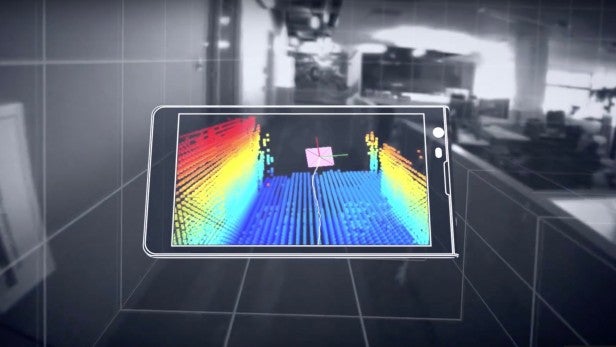
Google’s Johnny Lee took time during I/O 2016 to demonstrate various Tango-related research projects that were underway. This included video of ultra-precise indoor navigation in use, complete with a waypoint overlay on the phone’s display, which looks a bit like a modern first person shooter game. The difference is that the waypoints lead to an important appointment rather than a target.
Also shown off was the technology’s potential to map large buildings in 3D from the outside, and a demo which showed how Project Tango could detect and remove moving objects from a captured 3D image.
There was also talk of how Project Tango could support space robotics, enabling operators to accurately track the position and movements of their robots from thousands of miles away.
Xiaomi’s new 4K Android TV box
Somewhat overshadowed by the launch of Google Home, Google also announced some new hardware partners for Android TV and Google Cast. Among them is Beijing-based firm Xiaomi, which has been making huge gains in the Chinese smartphone market with its affordable yet powerful devices. Now, the company is launching a new version of its Mi Box – a set top box that will run Android TV and come with full 4K support.
Related: What is Xiaomi?
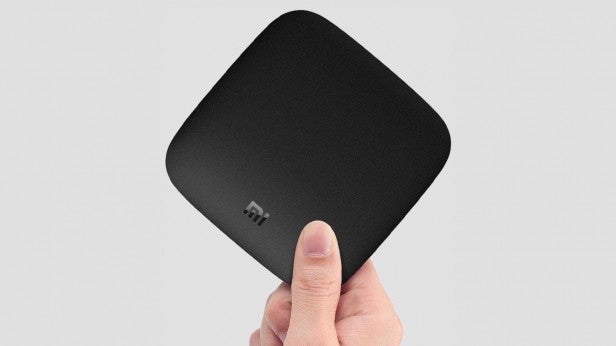
The device is capable of streaming 4K video at 60 frames per second and will be available in the US “soon”. That marks a significant change in Xiaomi’s release strategy. Previously, the company only released versions of the device overseas.
Other features include a Bluetooth remote with voice recognition and built-in Google Cast, allowing you to stream content from iOS and Android devices.
Chrome is getting Android apps and the Play Store
This one seems as though it was originally planned to be part of the Keynote speech, but, for whatever reason, was pulled at the last minute.
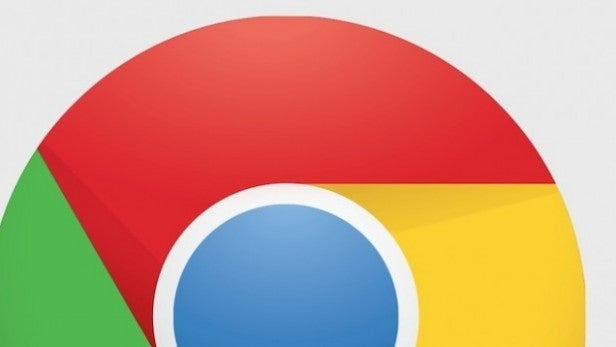
Google has now confirmed that it will be bringing Android apps to Chrome OS, after the news leaked following the opening Keynote address. That means the million plus apps from the Google Play Store will be available on the increasingly-popular Chromebook range.
The company explained some of the benefits for Chrome OS users, some of which include multitasking within a full desktop browser, easy file sharing between Chrome and Android, and compatibility with keyboard and mouse accessories, as well as touch.
Chrome OS users will also receive Android notifications on their Chromebooks.
Chrome and Android converging has been suspected for some time now, and it seems, with this news, that it’s finally official. A new breed of high-end Chromebooks will apparently be available later this year, with Samsung on-board as one of the manufacturers.
And that’s your lot. Check back with us over the coming days for more Google I/O updates and let us know what you think of the various announcements in the comments.

